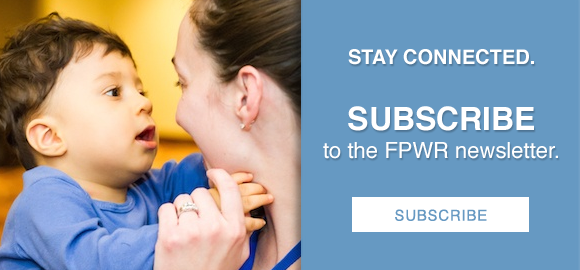In this 10‑minute video, Caroline Vrana-Diaz, FPWR Research Project Coordinator, explains how the PWS CLIC is helping to improve standards of care for people with Prader-Willi syndrome.
Click below to watch the video. If you're short on time, scroll down for timestamps to find the portions you're most interested in.
Presentation Summary With Timestamps
0:00 What Is the CLIC?
- PWS CLIC is the Clinical Investigation Collaborative.
- Its mission is to improve the quality of clinical research and medical care for people with Prader-Willi syndrome across the life span through collaborative investigation and research to support evidence-based care.
- PWS CLIC started two years ago and currently has 25 sites in the United States and three in Canada.
- New sites continue to be added.
0:32 How Is the PWS CLIC Improving Standards of Care?
- One of the main initiatives is to work with a company called Studytrax to capture data from clinical trials, surveys, and patient registries.
- The goal is to create a shared central repository for deidentified clinical data on PWS patients.
- The repository will be an additional resource for answering clinical questions in treatment.
- The repository data can be combined with data in the PWS Global Registry.
- This will be a powerful tool for optimizing clinical care in PWS.
2:50 Feeding Tube Use and Complications in PWS
- Dr. Sani Roy at Cook Children’s in Texas and Dr Jessica Duis at Children’s Hospital of Colorado are conducting a survey of feeding tube use with PWS patients.
- Major questions addressed in the survey:
- How often are feeding tubes placed?
- What’s the primary reason for tube placement?
- What are common complications, and do they differ by tube type?
- No one had previously asked these questions in a standardized way.
- Both researchers are members of the PWS CLIC, which presented the opportunity to use the CLIC to address these questions.
- Survey report is in prepublication review, and full results should hopefully be available soon.
3:42 Results of Feeding Tube Project
- About 350 people answered the survey.
- Seventy percent of respondents had only an NG (nasogastric) tube, 25% had an NG tube and a G (gastric) tube, and 5% percent had only a G tube.
- The main reasons for tube use were feeding difficulties and poor weight gain.
- Another reason given for tube use was aspiration or breathing difficulties in feeding.
- About 20% of G tube use was due to aspiration or breathing difficulties in feeding, whereas only 5% of NG tube use was for these reasons.
- NG tubes were normally removed by the age of six months.
- G tubes were normally removed by age two years.
- The rate of complications was higher with G tubes than with NG tubes.
- Caregivers reported both tube types had positive effects on quality of life.
- Generally it appears that feeding difficulties are addressed well with NG tube use.
- G tube placement requires surgery and thus involves additional surgery-related risks.
- Thanks go to all survey participants for providing new data on the short- and long-term complications of feeding tubes.
- The data will provide CLIC members with an understanding of current practices around the country.
- Do we need to be changing standard practices?
- Neonatologists often promote G tube use; the survey data may enable the PWS community to promote NG tube use in more cases.
7:35 Q & A
- Will there be a central location where doctors can access these findings?
- The findings will be published in a medical journal, but FPWR will also push out the information through blogs and social media.








